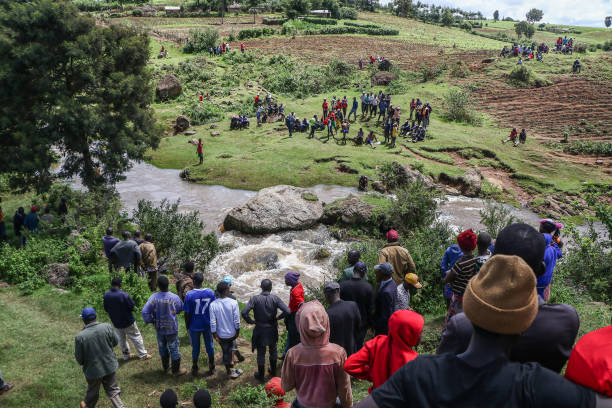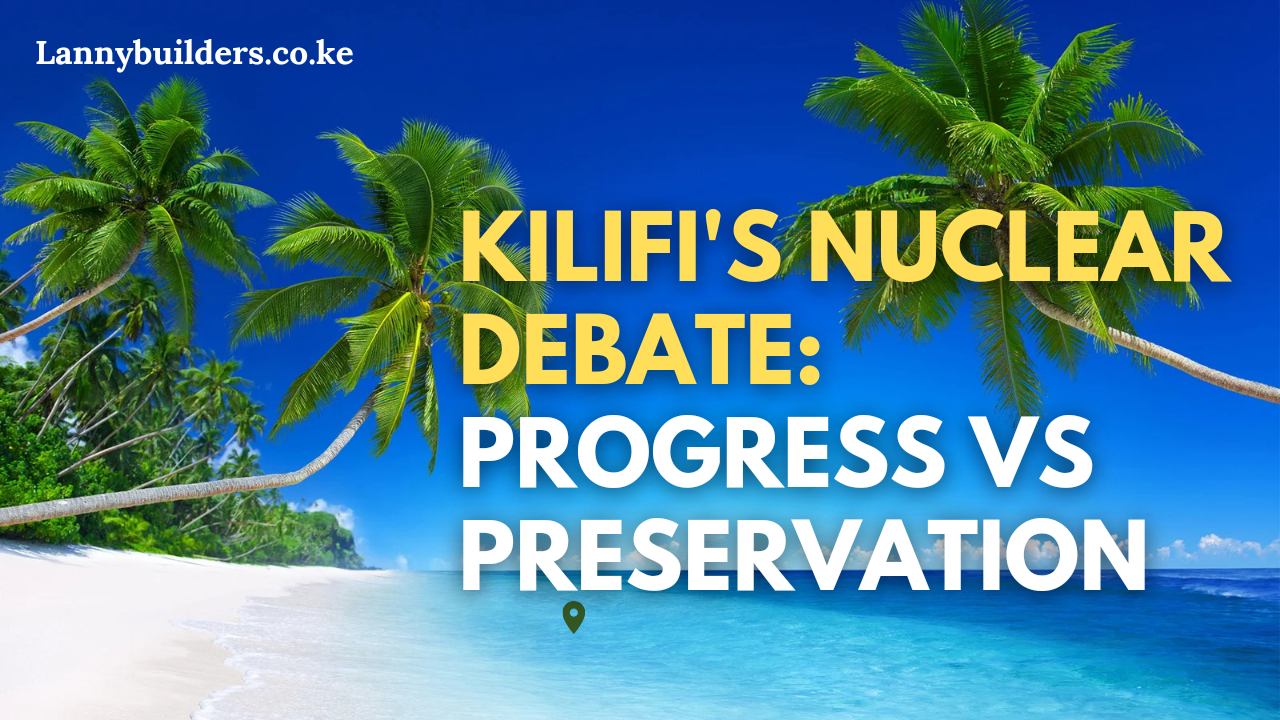Protests Against Proposed Nuclear Power Plant in Kilifi: A Clash of Development and Conservation
Currently, we’re at a crossroads, grappling with the complex challenge of balancing national development with environmental conservation. At the heart of this debate lies the government’s proposal to build the country’s first nuclear power plant in Kilifi County, a region celebrated for its pristine beaches, rich biodiversity, and thriving eco-tourism. While this project promises to address Kenya’s growing energy demands, it has sparked widespread protests among local communities and environmental activists who fear its potential repercussions.

A Bold Step Towards Energy Independence
The Kilifi nuclear power plant is part of Kenya’s broader strategy to diversify its energy sources and achieve long-term energy independence. With increasing demand driven by industrial growth and urbanization, renewable energy sources like hydroelectric and geothermal alone may not suffice. Nuclear energy, touted as a clean and efficient option, is being considered to bridge this gap and reduce reliance on fossil fuels.
The government envisions the project as a transformative step for the nation, with promises of job creation, enhanced energy reliability, and a boost to Kenya’s industrial ambitions. However, these lofty aspirations have not quelled the growing opposition.

The Environmental and Social Concerns
For many residents of Kilifi and environmentalists, the potential benefits of the nuclear power plant are outweighed by the risks it poses:
- Threats to Biodiversity
Kilifi is home to some of Kenya’s most endangered species, including marine life in the coral reefs and terrestrial wildlife in its lush forests. Activists argue that the construction and operation of a nuclear facility could disrupt these fragile ecosystems, jeopardizing the region’s biodiversity. - Impact on Eco-Tourism
Kilifi’s economy heavily relies on tourism, particularly eco-tourism. Visitors flock to the area for its serene beaches, unique wildlife, and cultural heritage. Opponents of the project fear that a nuclear plant, with its associated stigma and potential risks, could deter tourists and erode the region’s economic foundation. - Community Safety
The long-term safety of nuclear energy is another contentious issue. Concerns about potential radioactive leaks, waste disposal, and disaster preparedness have fueled skepticism among locals. Memories of international nuclear accidents such as Chernobyl and Fukushima serve as stark reminders of what could go wrong. - Displacement and Land Use
Large infrastructure projects often require significant land acquisitions, sometimes leading to the displacement of local communities. The Kilifi project has raised questions about land ownership and the fair treatment of affected residents.

Voices of Protest and Advocacy
Local leaders, environmental organizations, and grassroots movements have rallied against the proposed nuclear project. Demonstrations, petitions, and public forums have become common as communities express their fears and demand greater transparency from the government.
Environmental groups have called for an independent environmental impact assessment to evaluate the project’s potential consequences. They argue that alternative solutions, such as expanding solar and wind energy initiatives, should take precedence over nuclear power.

The Government’s Stance
Despite the backlash, the Kenyan government remains optimistic about the project. Officials emphasize that the Kilifi nuclear plant will adhere to strict international safety standards and employ advanced technology to mitigate risks. They also highlight the potential for Kenya to become a leader in nuclear energy in Africa, reducing energy costs and attracting foreign investment.
The government has promised community engagement and compensation for affected residents. However, critics argue that these measures fall short of addressing the deeper environmental and social concerns.
Navigating the Path Forward
The debate over the Kilifi nuclear power plant underscores the broader challenge of sustainable development in Kenya. While energy diversification is crucial for economic growth, it must be pursued in a manner that respects local communities and protects the environment.
Striking this balance will require open dialogue, robust environmental safeguards, and a willingness to explore alternative solutions. Kilifi’s future, and Kenya’s broader developmental aspirations, depend on finding common ground between progress and preservation.

Conclusion
The proposed nuclear power plant in Kilifi represents both an opportunity and a risk. It embodies Kenya’s ambition to modernize its energy sector and secure its future, but it also raises legitimate concerns about environmental degradation and community well-being.
For Kenya to succeed, the government, private stakeholders, and communities must work collaboratively, ensuring that development is not only impactful but also sustainable. The protests in Kilifi remind us that progress cannot come at the expense of the natural and cultural treasures that define who we are.
